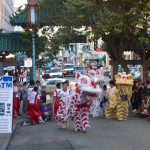
This year’s American Society of Regional Anesthesia and Pain Medicine’s 13th Annual Fall Pain Medicine meeting happens to be in my “neck of the woods”—one of the greatest cities in the world—San Francisco, California. Here are a few things you may or may not have known about San Francisco.
San Francisco is the biggest little city. At just under 47 square miles and with more than 200,000 inhabitants, San Francisco is second only to New York City in terms of population density. Despite its relatively small size, “the City” (as we suburbanites refer to it) consists of many small neighborhoods, each with its own charm and character: Union Square, the Financial District, Pacific Heights, the Marina, Haight-Ashbury, Chinatown, Little Italy, Nob Hill, Russian Hill, SoMa (South of Market), the Fillmore, Japantown, Mission District, Noe Valley, Twin Peaks, Castro, Sunset, Tenderloin, and others. For this reason, San Francisco may arguably be the only option for die-hard New Yorkers who wish to relocate away from snow.

Even though it doesn’t snow, San Francisco weather is incredibly unpredictable, even when going from one side of the city to the other. “The coldest winter I ever spent was a summer in San Francisco,” a quote often mistakenly attributed to Mark Twain (no one really knows who actually said it), is nevertheless often true. Here in the San Francisco Bay Area, our local meteorologists provide daily forecasts for each of the region’s microclimates. The western side of the City along California’s coast is regularly plagued with fog while the eastern side of the City tends to be sunny most days of the year. It’s always a good idea to check the microclimate forecast before heading over to see the Golden Gate Bridge just in case it happens to be shrouded in fog. Also, average July temperatures in the City range in the 50s-60s Fahrenheit (no different than average November temperatures), so summer tourists often contribute to the local economy by buying “SF” logo sweatshirts for their walk across the City’s most famous bridge.

San Francisco is very family-friendly. If you’re debating whether or not to make a family trip out of the Fall Pain Meeting, my advice is to do it. Right around the conference hotel, the Hyatt Regency San Francisco, there are a number of attractions and events worth checking out. Every Saturday there is a huge farmers market at the Ferry Building across the street from the hotel. As you probably figured out, from the Ferry Building you can also take a ferry ride to a number of other destinations in the Bay Area (I recommend Sausalito, a short trip that takes you past Alcatraz). For kids, there are 3 parks within walking distance, the San Francisco Railway Museum, Exploratorium, and the cable car turnabout at Powell and Market Street; trips to Fisherman’s Wharf or the aquarium are a short taxi or cable car ride away. In addition, runners will love running up and down the Embarcadero which gives you a view of the Bay Bridge and takes you past the City’s many piers; shoppers will be in heaven; and foodies have an impossible decision to make when choosing the location for every meal (try Slanted Door at the Ferry Building at least once).
Enough about San Francisco—you’ll have to see it for yourself. To register for the Fall Pain Medicine meeting, visit http://www.asrameetings.com/. For an overview of scheduled events in the words of meeting Chair, Dr. David Provenzano, see the August 2014 issue of ASRA News. This issue also includes fantastic original content covering the topics of digital subtraction angiography, pain outcomes, ASRA’s first entry into the app market, and much more!